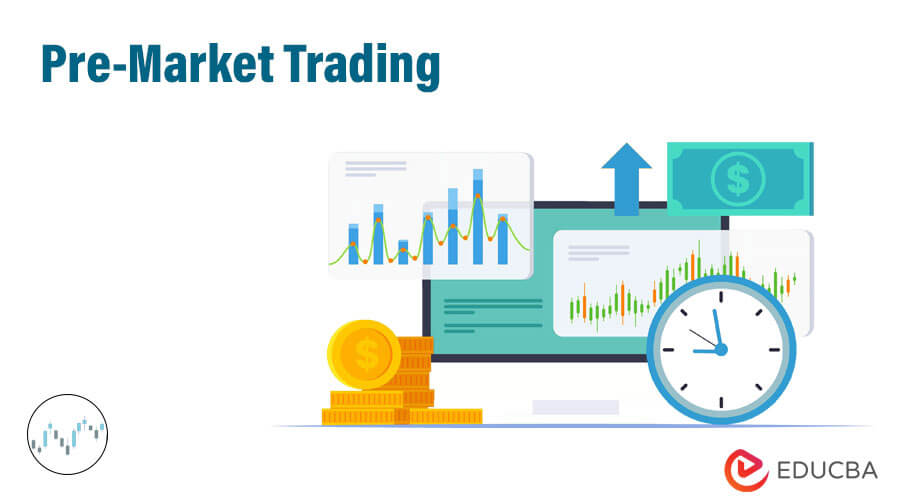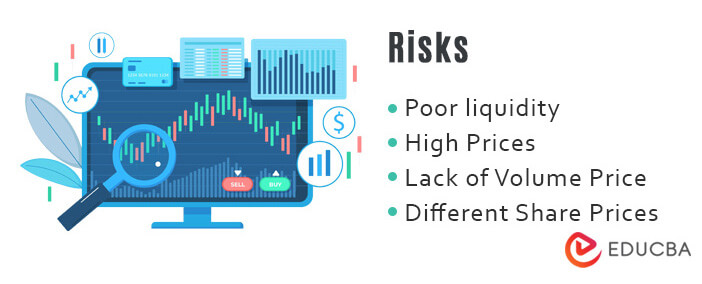Updated July 21, 2023

Definition of Pre-Market Trading
Pre-Market Trading is trading on the stock exchange that occurs before the normal business hours due to less trading volume and a wider spread between the bid and asks for the price and pre-market trading is mostly done by experienced brokers or professionals with large institutions such as mutual funds who may have more information and knowledge than normal investors.
Explanation
In the U.S., Trading hours are between 9.30 a.m. to 4 p.m. every business day, and the pre-market session occurs between 8.00 a.m. to 9.30 a.m. Eastern time. The reason behind pre-trading is that many companies report their earnings either before or after the closure of normal business hours, and the stock’s intrinsic value is changing continuously whether the market is open or not. People want to access the market when the intrinsic value is changing.
This allows the investors to act quickly to major events that can affect the market, such as sudden corporate misfortune, sudden political changes, an emergency situation, etc. This consists of more risk than normal market trading as it involves predictions about market situations; hence it is mostly done by experienced brokers, investors, or professionals. Some direct access trading platform enables trade to start at 4 am Eastern time.
How to Trade Pre-Market?
Pre-market trades execute on computer-based systems, including electronic communication networks. The investor has access to pre-market session places the buying or selling order. When an order for the desired stock is entered into an electronic communication network at the pre-determined rate, the electronic communication system keeps track and tries to find the matching order in pre-market session time. The system automatically cancels the desired order if not executed during the pre-market session. The trader has to mark the order as pre-market. If a selection of pre-market is not made, the order is deemed as placed for regular trading.
Example of Pre-Market Trading
Company ABC Ltd. has declared its quarterly results before the market opens for regular trading. The result of the company is not as per investors’ expectations, so there are chances of the price of shares falling. Mr. M, who has access to the Pre-market session, entered his order of selling the shares at pre-determined prices in pre-market sessions to save his investment and from suffering loss.
Who can Trade Pre-Market?
Computerized executions have made pre-market trading accessible to all, including retail traders, whereas previously, it was limited to institutional investors and large brokers. Some brokers charge extra fees from their clients for trading in premarket sessions due to less liquidity.
Uses of Pre-Market Trading
- Some investors monitor the stock’s situation and price when actual trading starts.
- Traders also try to get ahead of the response to market situations like political instability, law changes, etc.
- To avoid the risk of loss or to get more profit traders use pre-market trading
- Traders use pre-market trading to sell or purchase large stock quantities at limited prices.
Difference Between Pre-market Trading Hours and After-market Trading Hours
Pre-market trading allows the traders to trade before the normal market opens for trading, whereas post-market trading allows the traders to trade after the normal market trading closes. This affects the stock’s opening price in the normal trading market, whereas, on the basis closing price of the normal market, the post-market trading price of the stock is determined. Normal hours for pre-trading are between 4 am and 9.30 am, and post-trading is between 4 p.m. to 8 p.m. Pre-market prices are based on predictions. In contrast, post-market prices are real and based on research compared to pre-market prices, which are decided after news or results releases. Professionals or experienced persons normally trade during pre-market, and all investors, including retail investors, trade during post-market. Risk in the pre-market is high as compared to the post-market. They are generally researchers and quick responders, and post-market is an analyst.
Benefits
Below mentioned are some of the benefits:
- These traders can quickly assess the situation and make the trade beneficial.
- They get benefits due to the low volume of trading.
- This helps marketers discover the open price of a normal market.
- This reduces volatility.
- It helps the investors to sell or buy limited-price or quantity order stocks.
- It can be based on the normal trading market.
Risks of Pre-Market Trading
- There is poor liquidity; hence risk involved is high.
- The spread between buying and ask prices is higher pre-market than during normal trading hours.
- The price during pre-market trading hours might not reflect the share prices during regular hours.
- Due to the lack of volume price, rise or fall fluctuates more rapidly than the normal market.
Conclusion
Pre-market trading allows traders to trade before the normal trading market. Earlier pre-market trading access was given to selected investors, but with the changing technology, it is now available for all investors. If an investor wants to trade during pre-market, he has to enter desired order and stock details in an electronic communication device. Then the device matches the order to make it in the executable transaction. Still, if an order does not become a transaction before the normal market, the device automatically cancels the order.
Normally professionals or experienced investor trade in the pre-market session. This differs from post-market trading regarding timing, risks, volatility, price, market situations, etc. Pre-market session timings in the US are between 8 a.m. to 9.30 a.m. Still, some direct access trading platform enables trade to start off as early as 4 am Eastern time. In contrast, the post-session timings are between 4.00 p.m. to 8.00 p.m.
The risk in the pre-market is more as compared to the post-market. These are mostly the quick respondent and researchers, and post-market traders are analysts who react after analyzing the market. The pre-market price depends on predictions, and post-market session prices depend upon market conditions. This liquidity is low, and the risk is high.
Recommended Articles
This is a guide to Pre-Market Trading. Here we discuss the introduction, examples, explanation, differences, risks, and benefits. You can also go through our other related articles to learn more –


